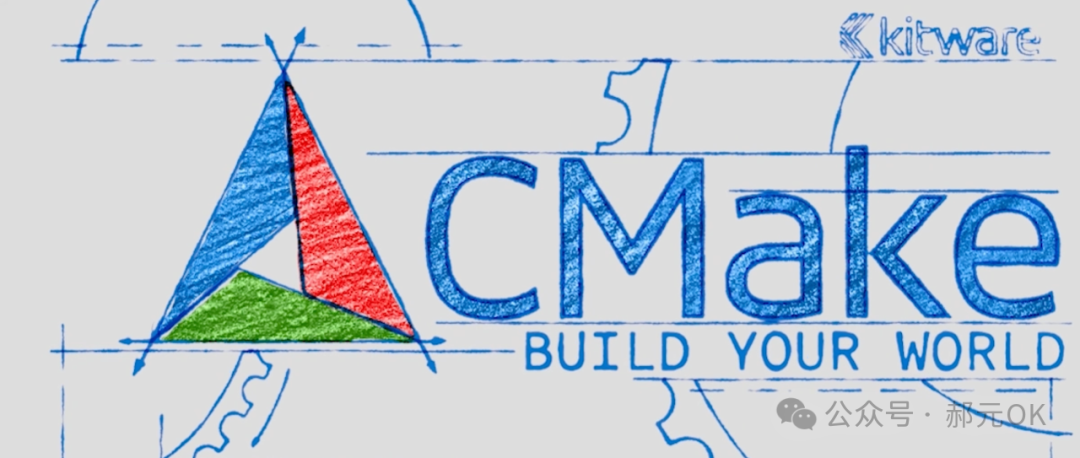
1. Why Use CMake?
In C++ projects, manually managing the build chain (especially for large projects with multiple platforms and modules) can introduce significant complexity. CMake addresses the following issues with its declarative syntax:
-
Cross-platform builds: Generates build files for the corresponding platform (Makefile/MSVC project/Xcode project)
-
Dependency management: Automatically finds third-party libraries (such as OpenCV, Boost)
-
Modular design: Supports multi-level directories, isolation of dynamic/static libraries
2. CMake Installation Guide on Ubuntu
2.1 Basic Installation (Recommended for Beginners)
Install the default repository version via APT:
sudo apt update && sudo apt install cmake
cmake --version # Verify version (Ubuntu 22.04 provides 3.22.1 by default)2.2 Install the Latest Version (Recommended for Developers)
Install the latest CMake from the Kitware official repository:
# Add Kitware repository
wget -O - https://apt.kitware.com/keys/kitware-archive-latest.asc 2>/dev/null | gpg --dearmor - | sudo tee /usr/share/keyrings/kitware-archive-keyring.gpg >/dev/null
echo "deb [signed-by=/usr/share/keyrings/kitware-archive-keyring.gpg] https://apt.kitware.com/ubuntu/ $(lsb_release -cs) main" | sudo tee /etc/apt/sources.list.d/kitware.list >/dev/null
# Install CMake
sudo apt update && sudo apt install cmake cmake-curses-gui
cmake --version # Verify version (should be ≥3.28)3. Core Command Details
3.1 <span>cmake_minimum_required()</span>: Version Constraint
Function Definition:
cmake_minimum_required(VERSION <min> [FATAL_ERROR])-
Purpose: Declares the minimum compatible version of CMake to avoid syntax compatibility issues.
-
Example:
cmake_minimum_required(VERSION 3.10 FATAL_ERROR) # Exit with error if below 3.103.2 <span>project()</span>: Define Project Metadata
Function Definition:
project(<PROJECT-NAME> [VERSION <major>[.<minor>[.<patch>[.<tweak>]]]] [LANGUAGES <language-name>...])-
Key Parameters:
-
<span>VERSION</span>: Project version number (affects variable<span>PROJECT_VERSION</span>) -
<span>LANGUAGES</span>: Specify languages (e.g.,<span>CXX</span>,<span>C</span>,<span>CUDA</span>)
-
Example:
project(HelloCMake VERSION 1.0.0 LANGUAGES CXX CUDA # Supports C++ and CUDA, can be omitted)3.3 <span>add_executable()</span>: Generate Executable File
Function Definition:
add_executable(<target> [WIN32] [MACOSX_BUNDLE] [EXCLUDE_FROM_ALL] source1 [source2 ...])-
Parameter Description:
-
<span><target></span>: Executable file name (e.g.,<span>hello</span>) -
<span>EXCLUDE_FROM_ALL</span>: Exclude from default build (must be specified manually for generation) -
Example:
add_executable(hello_main src/main.cpp src/utils/logger.cpp)3.4 <span>aux_source_directory()</span>: Collect Source Files
Function Definition:
aux_source_directory(<dir> <variable>)-
Purpose: Automatically collects all source files in the directory (
<span>.c</span>,<span>.cpp</span>, etc.) into a variable. -
Issue: May mistakenly include header files (
<span>.h</span>), recommended to use<span>file(GLOB)</span><span>:</span>
file(GLOB SRC_FILES CONFIGURE_DEPENDS "src/*.cpp" # Use GLOB_RECURSE for recursive matching)4. Practical: Build Your First CMake Project
4.1 Project Structure
HelloCMake/ ├── CMakeLists.txt ├── include/ │ └── utils.h └── src/ ├── main.cpp └── utils.cpp 4.2 Write CMakeLists.txt
cmake_minimum_required(VERSION 3.10 FATAL_ERROR)
project(HelloCMake VERSION 1.0.0 LANGUAGES CXX)
# Collect source files (recommended to declare explicitly)
file(GLOB SRC_FILES CONFIGURE_DEPENDS src/*.cpp)
# Generate executable file
add_executable(hello_main ${SRC_FILES})
# Include header file paths (recommended modern CMake way)
target_include_directories(hello_main PRIVATE ${PROJECT_SOURCE_DIR}/include # Only used by the current target)
# Set C++ standard
set_target_properties(hello_main PROPERTIES CXX_STANDARD 17 CXX_STANDARD_REQUIRED ON)4.3 Build and Run
# Create build directory (isolate source and generated files)
mkdir -p build && cd build
# Generate build system (default Debug mode)
cmake ..
# Compile and run
make -j$(nproc) ./hello_main5. Key Debugging Techniques
5.1 View Variable Values
message(STATUS "Source files: ${SRC_FILES}") # Print variable content5.2 Graphical Configuration (Optional)
In the Ubuntu development environment, it is recommended to use the command line as much as possible to reduce GUI usage.
ccmake .. # Command line interactive interface
cmake-gui # Graphical interface6. Summary and Next Article Preview
Key Points of This Article:
-
Master CMake environment configuration and basic syntax
-
Understand core commands such as
<span>project()</span>and<span>add_executable()</span> -
Build the first executable file and verify it
Next Article Preview:
-
“Part 2: Variables and Scope – The Cornerstone of CMake Programming”
-
Variable definitions and scope rules
-
Environment variables and cache variables
-
Dynamic configuration of project parameters
-
Hands-on Practice: Try modifying
<span>CMakeLists.txt</span>, add new<span>.cpp</span>files and rebuild, observe the output changes.Feedback: Feel free to leave comments in the discussion area regarding any issues encountered during the build!
For source code, please refer to:
https://github.com/vinmanager/hellocmake